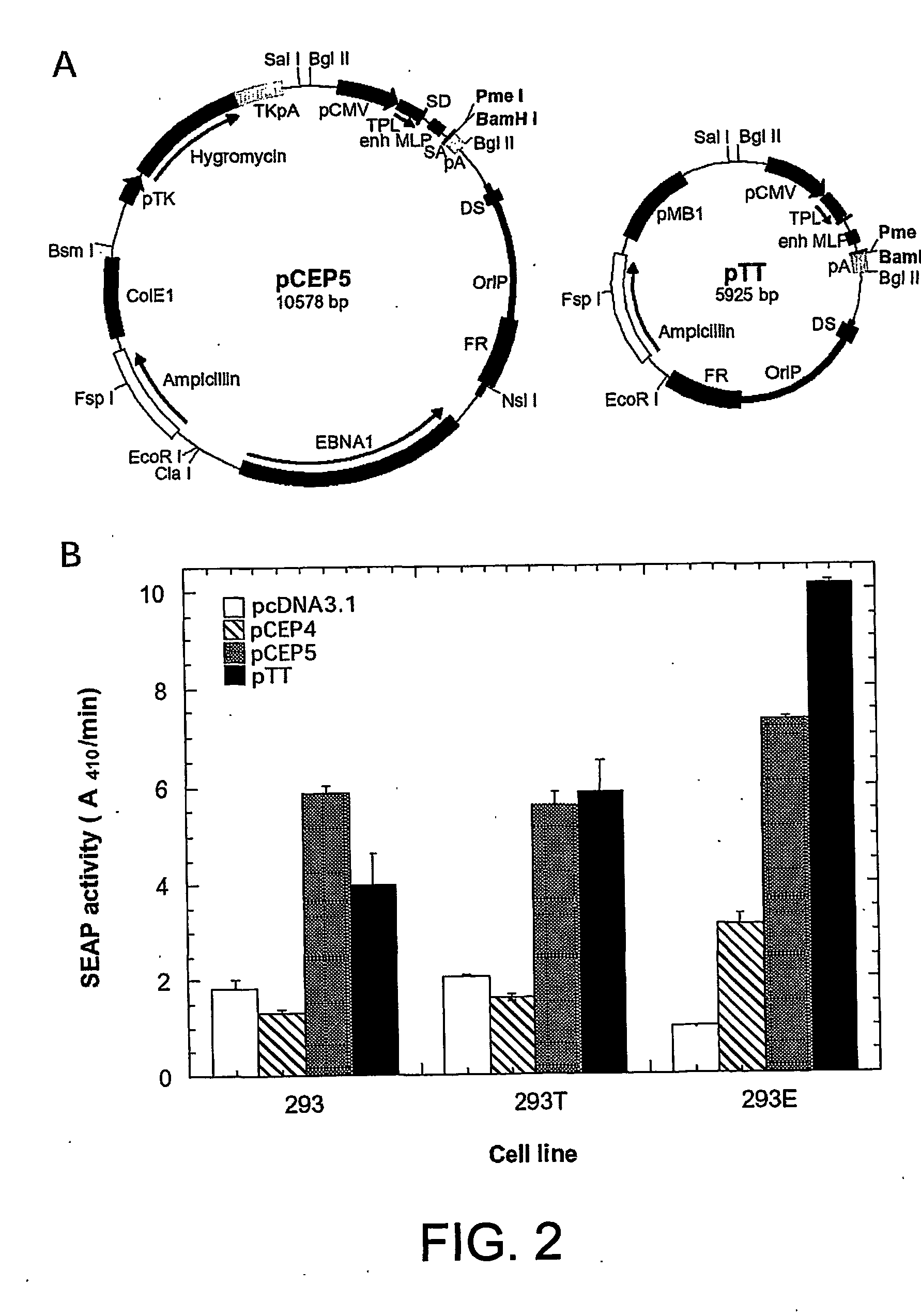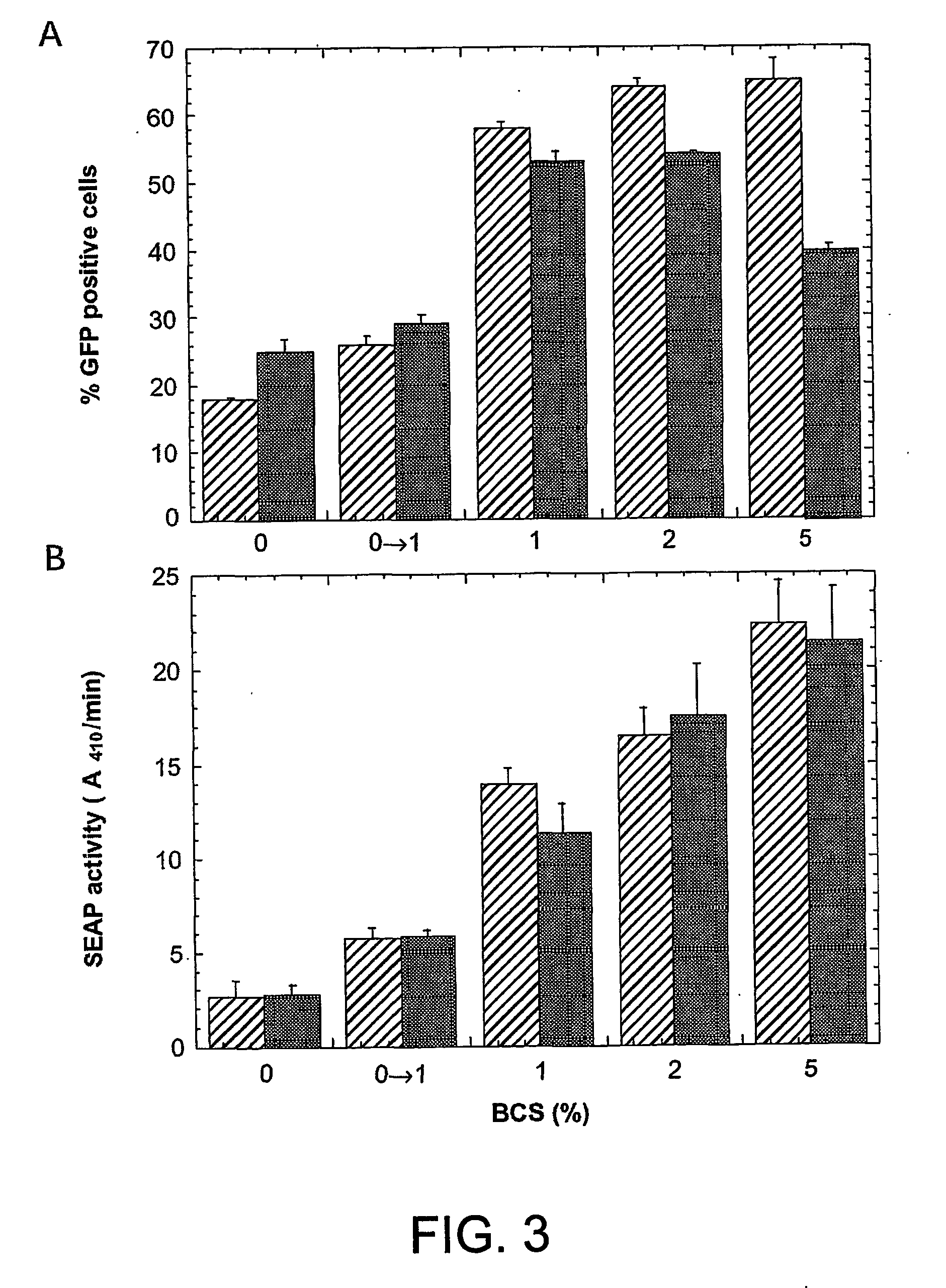Enhanced production of recombinant proteins by transient transfection of suspension-growing mammalian cells
a technology of suspension-growing mammalian cells and recombinant proteins, which is applied in the direction of peptide sources, genetically modified cells, dsdna viruses, etc., can solve the problems of limited cost-effectiveness, long and tedious process of stable transfectoma isolation and characterization, and limited culture surface availability, so as to enhance the transcriptional activity of the promoter, increase the nuclear import of the expression vector, and high expression levels
- Summary
- Abstract
- Description
- Claims
- Application Information
AI Technical Summary
Benefits of technology
Problems solved by technology
Method used
Image
Examples
examples
Transfection with Linear and Branched 25 kDa PEI
[0048] Preliminary results showed that linear and branched 25 kDa PEI were the most effective among various polymers tested (including branched 70 kDa, branched 50-100 kDa and branched 10 kDa; data not shown). In view of the above, transfection of 293E cells was optimized with both linear or branched 25 kDa PEI polymers using a plasmid encoding the enhanced GFP (pEGFP). Transfections were performed using cells grown as monolayers in 12-well plates and GFP expression was measured 72 hours later by flow cytometry. The effect of DNA to PEI ratios on transfection efficiency is shown in FIG. 1 using linear (A) or branched (B) PEI. The indicated amounts of DNA and polymers are for one well containing 5×105 cells. Only 0.25 μg of DNA per well was sufficient to reach a 50% transfection efficiency when using linear PEI, whereas a minimum of 1.0 μg was necessary using the branched isoform. Transfection efficiencies of ˜70% were reached with bo...
PUM
| Property | Measurement | Unit |
|---|---|---|
| average molecular weight | aaaaa | aaaaa |
| average molecular weight | aaaaa | aaaaa |
| volume | aaaaa | aaaaa |
Abstract
Description
Claims
Application Information
 Login to View More
Login to View More - R&D
- Intellectual Property
- Life Sciences
- Materials
- Tech Scout
- Unparalleled Data Quality
- Higher Quality Content
- 60% Fewer Hallucinations
Browse by: Latest US Patents, China's latest patents, Technical Efficacy Thesaurus, Application Domain, Technology Topic, Popular Technical Reports.
© 2025 PatSnap. All rights reserved.Legal|Privacy policy|Modern Slavery Act Transparency Statement|Sitemap|About US| Contact US: help@patsnap.com



